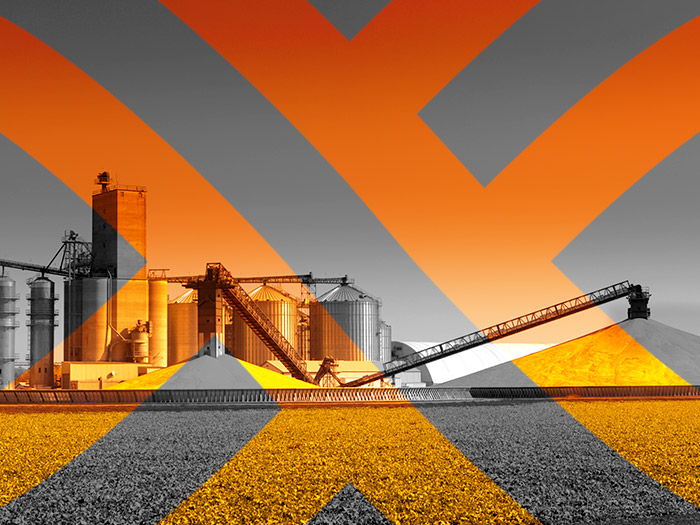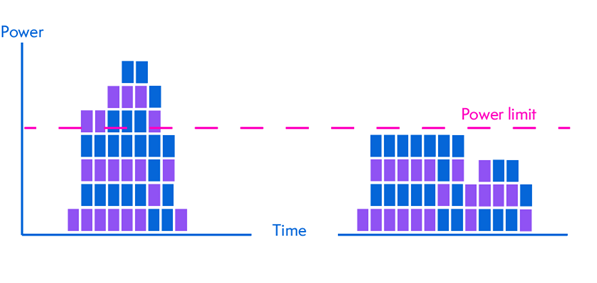News
better business decisions
Posted 1 year ago | 5 minute read

The load shifting low-down: your guide for 2024
Unlike many energy cost-saving strategies that focus on reducing the amount of energy used, load shifting addresses the timing of energy use. In this article we explore what it is and how to gain maximum benefits.
What is load shifting?
Load shifting, a concept familiar to industrial and commercial sites for years, involves moving electricity consumption from one time period to another.
For instance, an industrial process might be postponed to a different time when energy costs are lower or grid demand is less intense. This strategic shift can yield significant energy cost savings or enable participation in demand side response (DSR) programs, making the benefits outweigh any potential production delays.
How does load shifting work?
Every industrial plant has a built-in margin within its controls to allow for maintenance or unexpected failures. With the right technology, this margin can be leveraged for controlled load shifting, also known as energy flexibility. This can be achieved by:
- rescheduling processes: delaying or advancing production activities to off-peak hours
- utilising embedded generation: Turning on-site generators to reduce dependence on the grid during peak times
- turning off unnecessary equipment: shutting down non-essential machinery during high-cost periods.
It’s important to note that load shifting does not decrease the net quantity of energy used. Instead, it redistributes energy use to more cost-effective times.

Why is timing important?
The energy landscape has become more dynamic and diverse, driven by three core goals: decarbonising, decentralising, and digitalising the electricity system. The increased integration of renewable energy sources, such as wind and solar, introduces variability in supply and cost stability. Load shifting helps businesses navigate this complexity by:
- participating in balancing services: engaging in programs like frequency response to help stabilise the grid
- trading generated electricity: selling excess energy during price peaks to maximise revenue
- avoiding peak demand charges: reducing consumption during high-demand periods to lower energy bills
In the context of cost reductions, load shifting is often referred to as peak shaving, which helps businesses avoid the high costs associated with peak demand periods.
Energy storage for peak load shifting
Most industrial and commercial sites do not operate continuously, leading to fluctuating energy demand. By charging commercial batteries during non-peak times and discharging them during operational hours, businesses can significantly reduce peak demand charges.
Energy storage solutions also allow electricity generated on-site from solar PV or combine heat and power systems, for example, to be stored and used when it’s most advantageous.
Energy neutrality
Load shifting is generally energy neutral, meaning it does not reduce the total amount of energy used. While it helps lower demand charges, it doesn’t necessarily reduce overall usage charges, as the postponed activity will still consume the same amount of electricity when eventually performed.
However, it still supports sustainability efforts. By shifting loads to participate in frequency response events, businesses contribute to the grid’s ability to integrate intermittent renewable energy sources, reducing reliance on carbon-based power plants.
Load shifting in action
Effective load shifting relies on intelligent energy platforms. GridBeyond’s technology, for example, enables automated load shifting and helps businesses place their energy flexibility in the market for optimal returns.
This technology analyses market conditions and determines the best opportunities for frequency response, energy trading, peak avoidance, and other strategies to ensure that the benefits of shifting electricity consumption outweigh the costs.
The 2024 perspective on load shifting
Now halfway into 2024, its relevance and importance continues to grow. With the global push towards net-zero emissions, businesses are increasingly expected to adopt sustainable practices. Load shifting not only provides economic benefits but also supports broader environmental goals by enabling greater integration of renewable energy sources.
Advancements in technology are also making the practice increasingly accessible and efficient:
- Artificial intelligence and machine learning: these technologies enhance the predictive capabilities of energy platforms, allowing for more precise and effective load shifting strategies
- advanced energy storage solutions: improvements in battery technology have made energy storage more viable for commercial and industrial applications, providing reliable backup power and further reducing peak demand charges
- smart grid integration: enhanced communication between the grid and end-users facilitates real-time adjustments and better co-ordination of load shifting activities
In addition, governments and regulatory bodies worldwide are recognising the benefits and are providing support through various incentives and programs. In many regions, businesses can benefit from subsidies, tax breaks, and other financial incentives for participating in demand response programs and implementing energy-saving measures.
Future Trends
Looking ahead, several trends are likely to shape the future of load shifting:
- increased renewable integration: as the share of renewable energy in the grid increases, load shifting will become even more critical for maintaining grid stability and optimising energy costs
- blockchain technology: this emerging technology could provide more transparent and secure energy trading platforms, facilitating easier participation in load shifting markets
- greater consumer participation: residential and smaller commercial consumers may also start to play a more significant role in load shifting, leveraging smart technologies and dynamic pricing models to optimise their energy use
Conclusion
Load shifting is a powerful tool for businesses aiming to optimise their energy use and reduce costs while supporting grid stability and sustainability.
By moving electricity consumption to off-peak times, companies can take advantage of lower energy prices and participate in lucrative demand response programs. As technology continues to advance and regulatory support grows, the potential for load shifting to deliver significant economic and environmental benefits will only increase.
To stay ahead in energy management, consider leveraging intelligent energy platforms like GridBeyond’s, which can automate load shifting and enhance your overall energy strategy. By doing so, you’ll be well-positioned to navigate the evolving energy landscape of 2024 and beyond.








